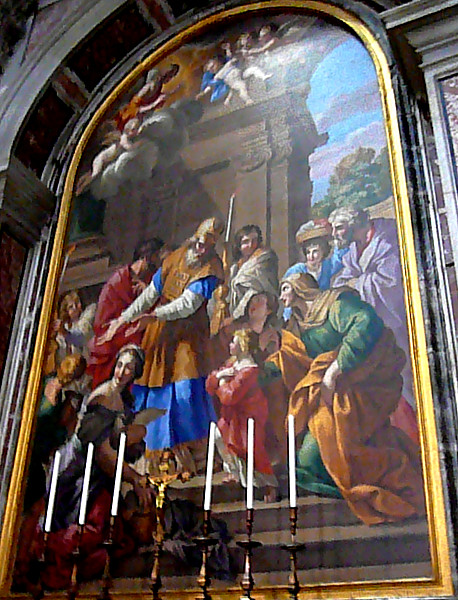

Pietro Paolo Cristofari,
after a painting by Francesco Romanelli (1638-42)1
The Presentation of the Virgin Mary
1726-28
Mosaic
Chapel of the Presentation, St. Peter's Basilica, Rome
The mosaic stands behind the chapel's altar and serves as a most appropriate counterpart to the verse that priests used to recite before beginning Mass: Introibo ad altare Dei, ad Deum qui laetificat iuventutem meam, "I will go unto the altar of God, to God who is the joy of my youth" (Psalm 42:4). To affirm this joy, all the gestures diverge from the traditional iconography to emphasize the joy of Mary's own introit. The high priest's two-arm gesture of welcome contrasts sharply with the reserve he shows in other Presentation images. The child's crossed arms, in other Marian images a sign of her humility, here express her joyous anticipation. The parents are usually placed at a distance to emphasize Mary's solitary resolve, but here St. Anne puts her right hand on Mary's shoulder or arm, and St. Joachim stands right behind them.

Early Baroque works often break the confines of the frame by having characters looking out of it or entering / leaving. In this one St. Joachim leans into the frame, and most importantly the woman in the left foreground looks out from it. She is a descendant of the mother in Tintoretto's Presentation who points her daughter's attention encouragingly to Mary's striding up the steps. Several painters after Tintoretto used the same device, but here the mother looks out from the frame to a daughter who exists in the extended scene beyond the frame.
Read more about the Presentation of Mary.
Photographed at the basilica by Richard Stracke, shared under Attribution-NonCommercial-ShareAlike license.